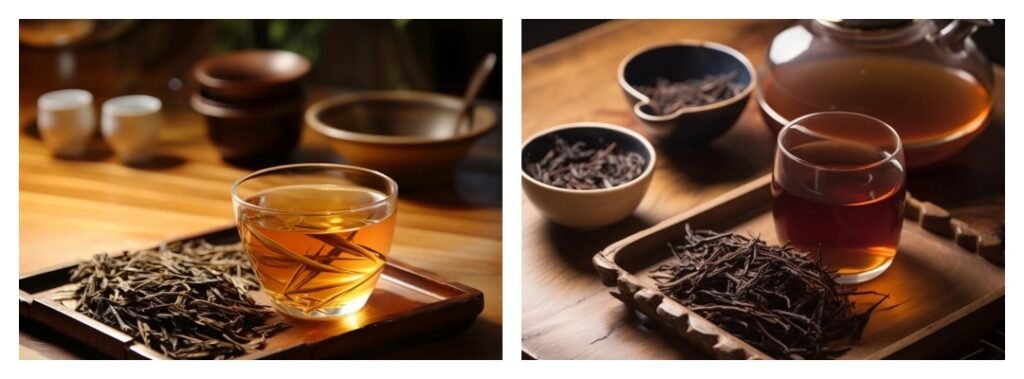The Art and Science of Steeping Tea Leaves
Steeping tea leaves is a timeless ritual that has been practiced for centuries, allowing tea enthusiasts to unlock the exquisite flavors and aromas hidden within each delicate leaf. From the delicate nuances of green tea to the robust richness of black tea, mastering the art of steeping tea leaves is essential for brewing the perfect cup. In this blog post, we’ll delve into the intricacies of steeping tea leaves, exploring the factors that influence flavor, aroma, and overall tea-drinking experience.
Understanding the Steeping Process:
Steeping is the process of extracting flavor, aroma, and beneficial compounds from tea leaves by immersing them in hot water. As the hot water interacts with the tea leaves, it releases soluble compounds such as catechins, polyphenols, and essential oils, which contribute to the unique taste and aroma of each tea variety.

Factors Affecting Steeping:
1. Water Temperature: The temperature of the water used for steeping plays a crucial role in the flavor development of tea. Different types of tea require specific water temperatures to achieve the optimal balance of flavors. For example, green teas are best steeped in water just below boiling (around 175°F to 185°F), while black teas benefit from hotter temperatures (around 200°F to 212°F). Herbal infusions, on the other hand, can withstand boiling water temperatures (212°F) without becoming bitter.
2. Steeping Time: The duration of steeping determines the strength and intensity of flavor in the brewed tea. Steeping tea for too long can result in a bitter or astringent taste, while steeping for too short a time may produce a weak and insipid infusion. As a general rule, green teas require shorter steeping times (2 to 3 minutes), while black teas and herbal infusions can be steeped for longer durations (3 to 5 minutes or more).
3. Tea-to-Water Ratio: The amount of tea leaves used relative to the volume of water also affects the strength and flavor of the brewed tea. A higher tea-to-water ratio will result in a stronger, more robust infusion, while a lower ratio will yield a milder brew. Experiment with different tea-to-water ratios to find the perfect balance of flavor for your taste preferences.

Tips for Steeping Tea Leaves:
1. Use Fresh, Filtered Water: Start with high-quality water free from impurities, as the quality of the water can significantly impact the taste of the brewed tea.
2. Preheat the Teapot or Cup: Warm the teapot or cup with hot water before adding the tea leaves and water to help maintain the optimal brewing temperature throughout the steeping process.
3. Cover While Steeping: Covering the teapot or cup while steeping helps retain heat and aroma, resulting in a more flavorful infusion.
4. Experiment and Enjoy: Don’t be afraid to experiment with different steeping times, water temperatures, and tea-to-water ratios to discover your perfect cup of tea. Each tea variety and personal preference may require slight adjustments to achieve the desired flavor profile.

Steeping tea leaves is both an art and a science, requiring attention to detail, patience, and a discerning palate to brew the perfect cup. By understanding the factors that influence the steeping process, such as water temperature, steeping time, and tea-to-water ratio, you can unlock the full potential of your favorite teas and enjoy a truly exceptional tea-drinking experience. So, gather your tea leaves, boil the water, and embark on a journey of exploration and discovery as you steep your way to tea perfection.
